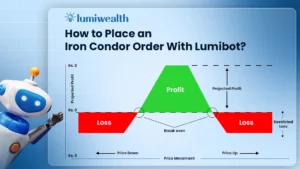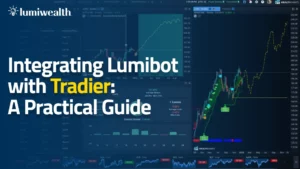Are you looking to get into algorithmic trading but don’t know where to start? Python for algorithmic trading is a powerful tool that can help you take your investing to the next level. In this blog post, we’ll take a look at the benefits of using Python for algorithmic trading, how to build your own algorithmic trading strategy with Python, and strategies for avoiding costly investing mistakes with algorithmic trading. By the end of this post, you’ll have a better understanding of what algorithmic trading is and how to get started using Python for algorithmic trading. So, let’s dive in!
Introduction to Python for Algorithmic Trading
Python for algorithmic trading is a programming language that is used for creating automated trading strategies. Algorithmic trading is the process of using a computer program to automatically execute trades based on predetermined criteria. With algorithmic trading, you can create your own trading strategies and automate your trading decisions. This means that you don’t have to manually place trades or monitor the markets 24/7.
Python is the language of choice for many algorithmic traders because of its flexibility, scalability, and ease of use. Python is a powerful language that allows you to develop robust trading strategies with minimal effort. Additionally, Python is open source, meaning that anyone can use it for free. This makes it the perfect language for algorithmic trading.
Benefits of Using Python for Algorithmic Trading
There are many benefits to using Python for algorithmic trading. For starters, Python is easy to learn, making it accessible to traders of all skill levels. Additionally, Python is a powerful language, allowing traders to create complex trading strategies with minimal effort. Furthermore, Python is open source, meaning that it is free to use, making it the perfect language for algorithmic trading.
Python also offers traders access to a wide range of libraries and frameworks, such as Pandas, NumPy, and TensorFlow, which make it easier to create complex trading strategies. Additionally, Python is an object-oriented language, making it easier to read and understand code. Finally, Python is fast and efficient, allowing traders to develop and backtest their strategies quickly and easily.
Understanding the Stock Market and Algorithmic Trading Strategies
Before you can start using Python for algorithmic trading, it’s important to understand the stock market. The stock market is an exchange where traders buy and sell shares of companies. Each share represents a part ownership in the company and can be bought and sold on the stock market.
Algorithmic trading strategies are computer programs designed to automatically execute trades based on predetermined criteria. These criteria can include factors such as price, volume, and volatility. Algorithmic trading strategies can be used to buy and sell stocks, currencies, or other assets.
Building your Algorithmic Trading Strategy with Python
Once you have a basic understanding of the stock market and algorithmic trading strategies, you can start building your own algorithmic trading strategy with Python. One of the first steps is to decide which markets you want to trade in. You can then use the Python programming language to develop a trading strategy that meets your goals.
When developing your algorithmic trading strategy with Python, it’s important to consider factors such as risk management and market conditions. Additionally, you’ll need to backtest your strategy to ensure that it performs as expected. Backtesting allows you to evaluate the performance of your strategy on historical data and determine if it is profitable.
Ways to Avoid Costly Investing Mistakes with Python Algorithmic Trading
Algorithmic trading can help you avoid costly investing mistakes by automating your trading decisions. Automated trading strategies can help you stick to your investing plan and avoid emotional decisions. Additionally, algorithmic trading strategies can help you manage risk by limiting your exposure to the markets.
It’s important to understand the risks associated with algorithmic trading. Algorithmic trading strategies can be complex and difficult to understand. Additionally, algorithmic trading systems can be susceptible to errors. As such, it’s important to thoroughly test your trading strategies before using them in live trading.
Strategies for Algorithmic Trading with Python
Once you have a basic understanding of the stock market and algorithmic trading, you can start developing your own algorithmic trading strategies with Python. One of the most popular algorithmic trading strategies is day trading. Day trading involves opening and closing positions within the same trading day. Day traders use a variety of strategies, such as momentum trading, scalping, and trend following.
Another popular algorithmic trading strategy is swing trading. Swing trading involves taking longer-term positions, typically lasting several days or weeks. Swing traders often use technical analysis to identify potential trading opportunities. Additionally, swing traders may use fundamental analysis to identify potential trading opportunities.
Advanced Algorithmic Trading Strategies with Python
For experienced algorithmic traders, there are a variety of more advanced algorithmic trading strategies that can be used with Python. One of the most popular advanced algorithmic trading strategies is high-frequency trading. High-frequency trading involves taking advantage of small price movements in the markets by executing trades at a rapid pace. High-frequency trading strategies require a high degree of skill and experience.
Another advanced algorithmic trading strategy is machine learning. Machine learning algorithms use data to identify patterns in the markets and make trading decisions. Machine learning algorithms are often used for more sophisticated trading strategies, such as arbitrage and market making.
How to Get Started with Algorithmic Trading with Python
Getting started with algorithmic trading with Python doesn’t have to be difficult. The first step is to learn the basics of the Python programming language. If you’re new to programming, there are a variety of free tutorials and courses available online. Additionally, you can find a variety of free and open source algorithmic trading libraries available online.
Once you have a basic understanding of Python and algorithmic trading, you can start building your own trading strategies. You can use the Python programming language to develop your own trading strategies or use one of the many open source algorithmic trading libraries available online.
Courses and Resources for Algorithmic Trading with Python
If you’re looking for more in-depth courses and resources for algorithmic trading with Python, there are a variety of options available. Many online courses and tutorials are available for free or at a low cost. Additionally, there are a variety of books and online resources available that provide more detailed information on algorithmic trading with Python.
Sign up for our free trial today and learn how to create your own trading robot using python!
Conclusion
Algorithmic trading with Python is a powerful tool that can help you take your investing to the next level. Python is a powerful language that is easy to learn and allows traders to create complex trading strategies with minimal effort. Additionally, Python is open-source, meaning that anyone can use it for free.
When getting started with algorithmic trading with Python, it’s important to understand the stock market, develop your own trading strategies, and understand the risks associated with algorithmic trading. Additionally, it’s important to thoroughly test your strategies before using them in live trading.
By following the steps outlined in this blog post, you’ll be well on your way to becoming a successful algorithmic trader using Python. So, what are you waiting for? Get started with algorithmic trading with Python today!




